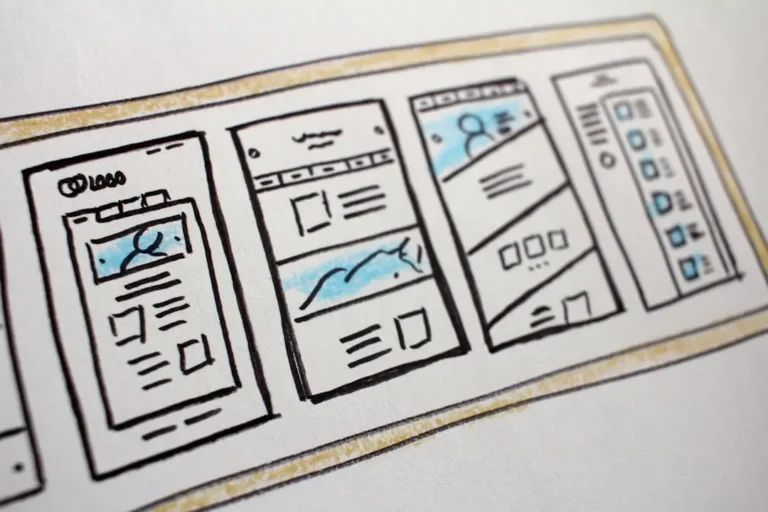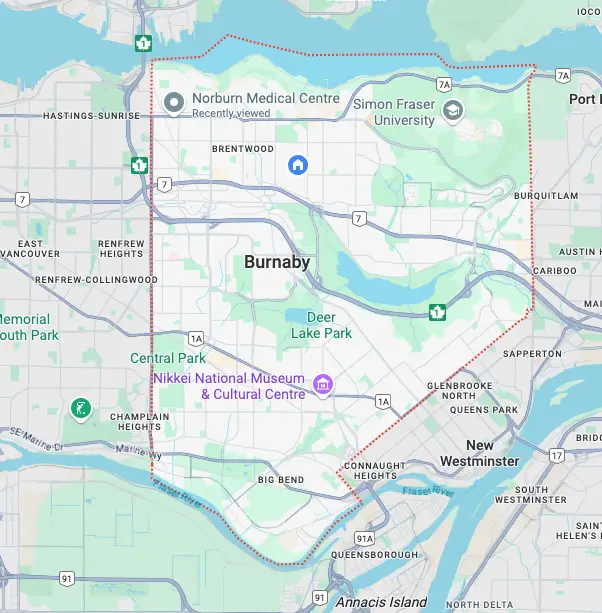Transforming a Small Business with Responsive Burnaby Web Design
A Deep Dive into the Process, Challenges, and Outcomes of Creating a User-Centric Digital Solution for Local Retailers
Introduction
Burnaby Web Design is a pivotal player in the digital landscape for small businesses, offering tailored web solutions that cater to the unique needs of entrepreneurs and business owners. In an age where online presence is non-negotiable, the importance of effective web design cannot be overstated. This article delves into the nuances of Burnaby Web Design, exploring its history, challenges, strategies, and outcomes while providing insights for small business owners seeking to enhance their digital footprint.
Background
History of Burnaby Web Design
Burnaby Web Design emerged as a response to the increasing demand for professional online representation among local businesses. Over the years, the industry has transitioned from simplistic HTML pages to sophisticated, interactive designs that improve user engagement. This evolution reflects broader technological advancements, as well as shifts in consumer expectations regarding functionality and aesthetics.
The early 2000s saw an influx of web design firms in Burnaby, each vying for a piece of the market. As businesses began to recognize the power of online presence, the focus shifted to creating visually appealing websites that are not only functional but also optimized for search engines. Burnaby Web Design quickly became synonymous with innovation and quality service. This historical context sets the stage for understanding the current state of web design in Burnaby.
Market Trends in Web Design
The Burnaby Web Design market is characterized by rapid changes influenced by user behavior, technological advancements, and design trends. Currently, responsiveness is key, with mobile-friendly designs becoming a standard expectation. Additionally, the use of minimalistic designs, faster load times, and enhanced user experience through intuitive navigation are crucial trends shaping the industry.
Moreover, the rise of e-commerce has resulted in more businesses seeking comprehensive digital solutions that include not just web design but also digital marketing strategies. As businesses compete for attention in a saturated market, the importance of a standout website—delivered by a skilled Burnaby Web Design company—has never been more pronounced.
The Problem
Common Challenges Faced by Small Businesses
Small businesses often encounter several challenges when it comes to web design. Limited budgets can restrict their ability to hire professional designers or purchase high-quality website templates. Additionally, many small business owners lack the technical expertise required to create and maintain a modern website, leading to subpar online representations. Burnaby Web Design providers often bridge this gap by offering scalable and cost-effective solutions.
Furthermore, understanding the target audience and tailoring content accordingly can be daunting. Small businesses may struggle with branding consistency, leading to confusion among potential customers. These challenges underline the need for specialized Burnaby Web Design services that cater specifically to their needs.
Impact of Poor Web Design on Businesses
Poor web design can have dire consequences for small businesses. A website that is difficult to navigate, slow to load, or visually unappealing can deter potential customers, ultimately resulting in lost revenue. Studies show that users often judge the credibility of a business based on its website, meaning a substandard design can hurt a brand’s reputation. This is where Burnaby Web Design services play a vital role.
Moreover, ineffective web design can impede search engine optimization (SEO) efforts, making it harder for businesses to appear in search results. This lack of visibility can further isolate small businesses in an increasingly digital marketplace, reinforcing the need for quality Burnaby Web Design that not only attracts visitors but also converts them into customers.
The Strategy & Planning
Identifying Target Audience
A cornerstone of effective Burnaby Web Design is understanding the target audience. Small businesses in Burnaby must conduct thorough market research to identify their ideal customers, their preferences, and their pain points. This information is critical for creating a website that speaks directly to the audience, ensuring that the design and content resonate with users.
By segmenting the audience based on demographics, behaviors, and needs, businesses can tailor their messaging and design elements. For instance, a business targeting younger consumers may incorporate vibrant colors and modern design elements, while one aimed at professionals might prioritize a more conservative, polished look—all achievable through skilled Burnaby Web Design professionals.
Setting Clear Goals for Web Design
Establishing clear goals is vital for a successful Burnaby Web Design project. Small businesses should define what they aim to achieve with their website, whether it’s increasing sales, generating leads, or improving brand awareness. These goals will guide every aspect of the design process, from layout to content development.
Furthermore, aligning the Burnaby Web Design strategy with overall business objectives ensures that the website serves as a powerful tool rather than just an online brochure. It becomes essential to balance aesthetic appeal with user functionality to create a seamless experience that drives results.
The Responsive Web Design Process
Design Principles and Best Practices
The responsive Burnaby Web Design process involves creating a website that adapts to various screen sizes and devices. Key design principles include simplicity, visual hierarchy, and accessibility. A clean, uncluttered layout with a clear navigation path enhances user experience, allowing visitors to find information quickly and efficiently.
Best practices also encompass the use of high-quality images, readable fonts, and a color palette that aligns with the brand’s identity. Additionally, incorporating calls-to-action in strategic locations facilitates user engagement and prompts visitors to take desired actions, such as making a purchase or signing up for a newsletter.
Tools and Technologies Used
Burnaby Web Design firms leverage a variety of tools and technologies to create responsive websites. Content Management Systems (CMS) like WordPress, Joomla, and Wix allow for easy updates and maintenance, making them ideal for small business owners. Additionally, HTML5, CSS3, and JavaScript are fundamental technologies that enable interactive features and mobile responsiveness.
Design tools such as Adobe XD and Figma are popular for wireframing and prototyping, allowing designers to visualize and test their ideas before implementation. Understanding these tools helps small business owners appreciate the complexity and expertise required in the Burnaby Web Design process.
Development & Implementation
Development Phases
The development phase of Burnaby Web Design typically involves several stages, beginning with planning and information architecture. This stage establishes the structure of the website, including navigation menus and content hierarchy. Following this, visual design elements are created, translating the brand’s identity into a digital format.
Once the design is finalized, the coding phase begins, where developers transform the visual design into a functioning website. This often entails using responsive design techniques to ensure compatibility across devices. After coding, the website undergoes a rigorous review process to check for any issues or errors before launch.
Testing and Quality Assurance
Testing and quality assurance are crucial components of the Burnaby Web Design process. This stage involves usability testing, where real users interact with the site to identify potential problems and gather feedback. Ensuring that the website functions smoothly on different devices and browsers is also paramount.
Quality assurance checks for performance issues, such as load times and responsiveness, while also ensuring that all links and features work correctly. This comprehensive testing phase is essential for delivering a polished final product that meets the expectations of both the business and its customers.
Key Challenges
Technical Challenges in Implementation
Technical challenges frequently arise during the implementation of Burnaby Web Design projects. Issues may include compatibility problems between different browsers or devices, which can lead to inconsistent user experiences. Additionally, small businesses may face challenges in integrating third-party applications, such as e-commerce platforms or customer relationship management (CRM) systems.
Moreover, the rapid pace of technological advancement can create a skills gap for some small business owners. Staying updated with the latest Burnaby Web Design trends and tools is crucial, as outdated practices may lead to inefficiencies and vulnerabilities in the website.
Client Communication and Feedback
Effective communication between Burnaby Web Design professionals and clients is vital for the success of any project. Misunderstandings regarding project goals, timelines, or expectations can lead to dissatisfaction with the final product. Establishing clear lines of communication and regular check-ins can help mitigate these challenges.
Moreover, soliciting client feedback during various stages of the design process fosters collaboration and ensures that the final product aligns with the client’s vision. Creating a culture of openness regarding feedback can lead to better outcomes and a more satisfying client experience.
Outcomes & Results
Success Metrics and KPIs
Evaluating the success of Burnaby Web Design projects relies on measurable outcomes. Key Performance Indicators (KPIs) for small businesses include website traffic, conversion rates, and user engagement metrics. An increase in website traffic signifies effective SEO strategies, while high conversion rates demonstrate that the website meets user needs.
Additionally, tracking user behavior through analytics tools can provide insights into how visitors interact with the site. Metrics such as bounce rates and average session duration can highlight areas for improvement, guiding future Burnaby Web Design initiatives.
Client Testimonials and Feedback
Client testimonials serve as powerful endorsements of Burnaby Web Design firms’ capabilities. Positive feedback reflects satisfaction with the design process and the final product, reinforcing the firm’s credibility in the competitive market. Gathering testimonials can also provide insights into client experiences, which can inform future projects.
Moreover, showcasing successful case studies on a Burnaby Web Design firm’s website can attract potential clients by demonstrating the tangible results achieved for other businesses. This strategy not only builds trust but also highlights the firm’s expertise in addressing the unique challenges faced by small businesses.
Conclusion
Summary of Key Findings
Burnaby Web Design plays a crucial role in empowering small businesses to thrive in the digital landscape. The journey of web design involves understanding the target audience, setting clear goals, and navigating the complexities of design and implementation. By adhering to best practices and staying abreast of industry trends, small businesses can create impactful online presences that resonate with their audiences.
Future Trends in Burnaby Web Design
Looking ahead, the future of Burnaby Web Design will likely be shaped by advancements in technology and evolving user expectations. Trends such as artificial intelligence in design, enhanced personalization, and augmented reality experiences are poised to redefine how businesses engage with their customers online. Small business owners must remain adaptable and open to these changes to continue reaping the benefits of effective Burnaby Web Design.
FAQs
Q: What is the importance of having a professional website for small businesses?
A: A professional Burnaby Web Design website is essential for small businesses as it serves as their online storefront. It enhances credibility, attracts potential customers, and provides a platform for showcasing products and services. A well-designed website can significantly influence purchasing decisions.
Q: How can small businesses improve their website’s SEO?
A: Improving a website’s SEO involves optimizing content with relevant keywords, ensuring mobile-friendliness, enhancing page load speeds, and acquiring backlinks from reputable sites. Regularly updating content and maintaining a user-friendly Burnaby Web Design also contribute to better SEO performance.
Q: What are common mistakes to avoid in web design?
A: Common Burnaby Web Design mistakes include cluttered layouts, poor navigation, slow load times, and neglecting mobile responsiveness. Additionally, failing to define the target audience or set clear goals can lead to ineffective designs that do not meet user needs.
Q: How often should a website be updated?
A: A website should be updated regularly to reflect changes in products, services, or promotions. Additionally, periodic reviews of Burnaby Web Design and content help ensure that the website remains relevant and functional, enhancing user experience.
Q: What are the costs associated with professional web design?
A: The costs of professional Burnaby Web Design can vary widely based on factors such as the complexity of the project, the experience of the designers, and the features required. Small businesses should budget for both initial design and ongoing maintenance to ensure continued success.







